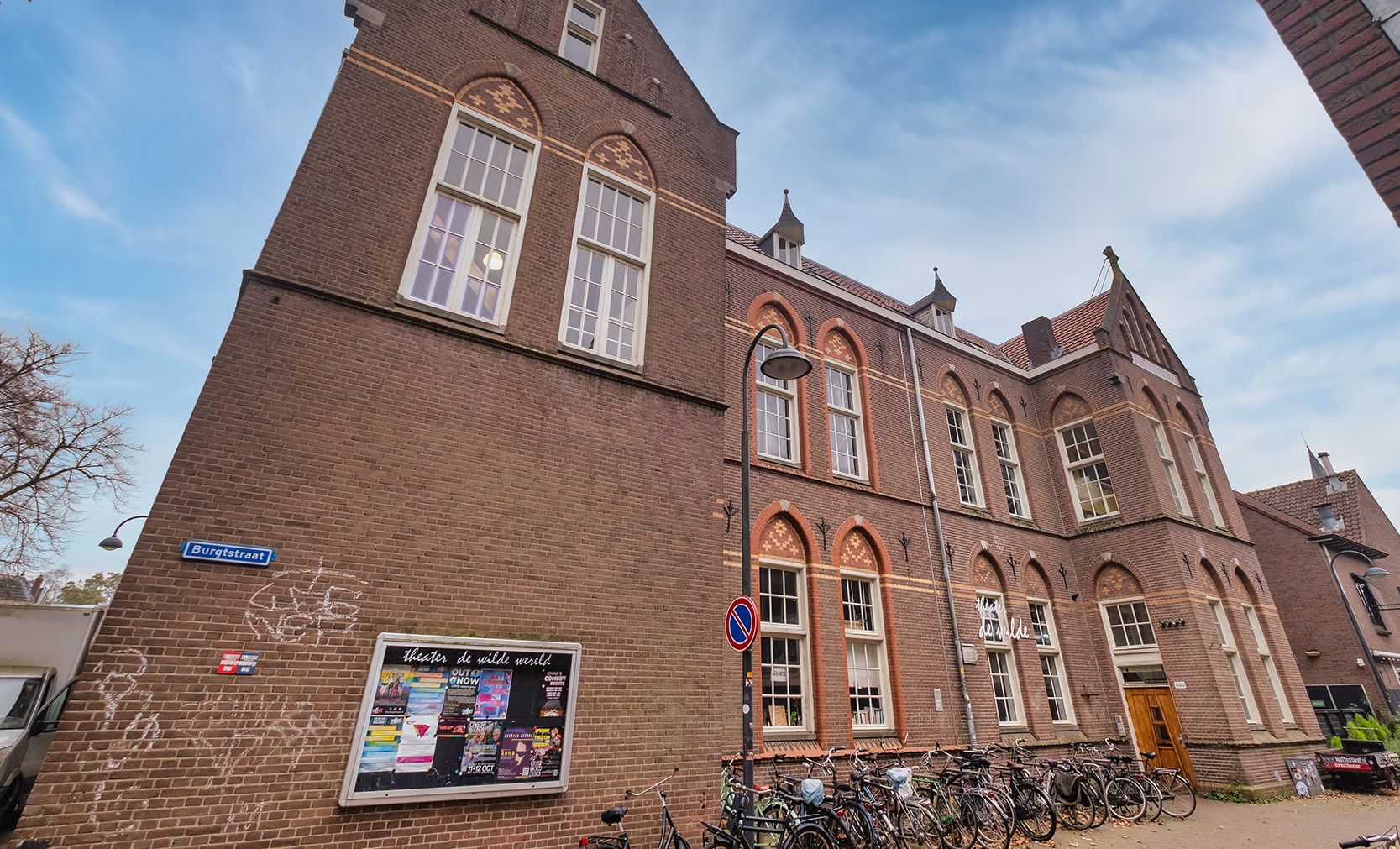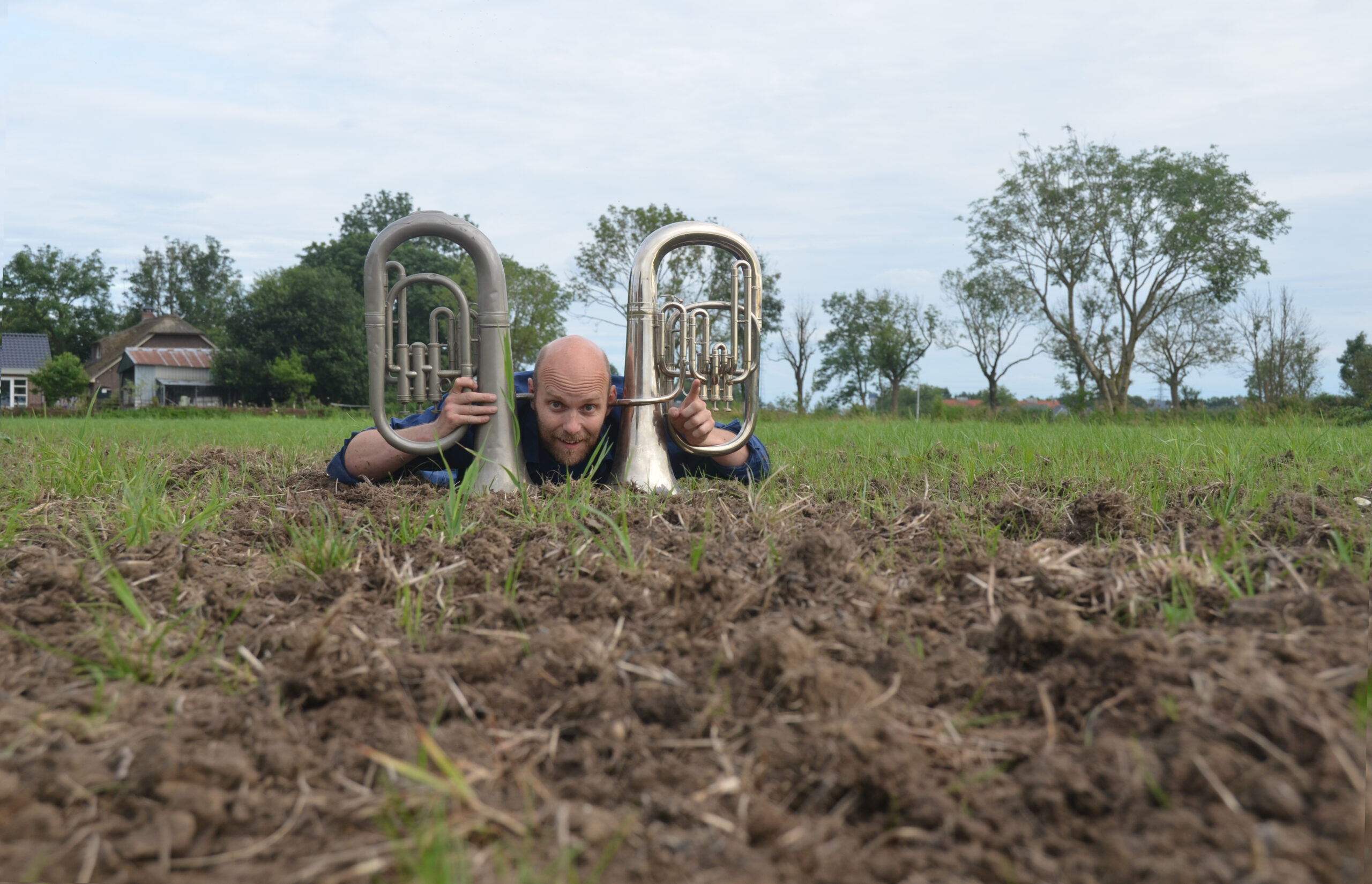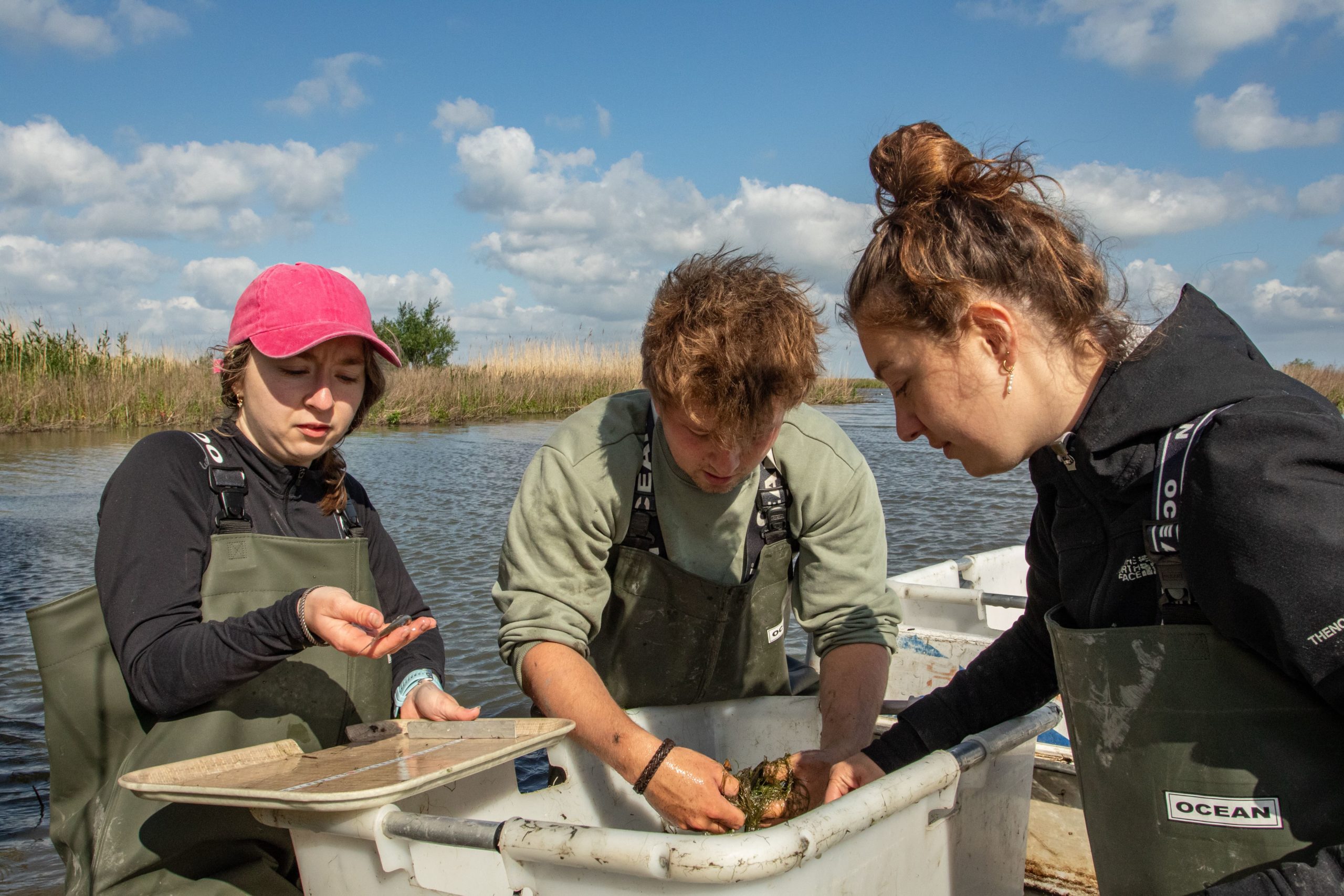The idea was a little wild: Would it be a good idea for a number of researchers to go meet Wageningen citizens on the market? To explain what WUR is working on and to answer their questions. In short, to bridge the gap between the campus and the city.
The idea was put to the test on Wednesday as part of the celebrations of the Opening of the Academic Year. At different stalls on the sunny weekly market, some thirty WUR researchers made themselves available. Not on a fancy stand or stage, but low-threshold and accessible, at a simple table.
For example, associate professor Sonja de Vries and PhD candidate Roseanne Minderhoud were located next to the poulterer. De Vries specialises in animal feed, and Minderhoud in human nutrition. They had Wageningen citizens guess how many peanuts, chickpeas, chicken filets or fish an average person must consume to ingest sufficient lysin, an amino acid the human body is incapable of producing. Spoiler, for chickpeas the number is 800 grammes. For chicken filet, less than 80 grammes.
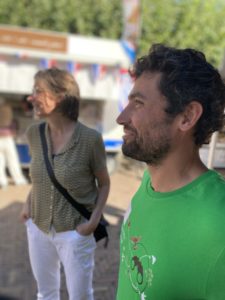
Fellow citizens
Caspar Quist, a teacher of Biosystemics (Plant Sciences), was located at the florists. He is enthusiastic about WUR’s efforts to strengthen its ties with its fellow citizens. He is doing the same with his very local biodiversity tours, identifying species in a random front garden in Wageningen together with neighbours and a WUR expert and offering tips to increase the biodiversity. That idea was met with enthusiasm on the market.
Across from the poulterer was Bram Vos, a senior researcher at Wageningen Livestock Research. He demonstrated a new concept for poultry coops that appears to be capable of significantly reducing particulates and nitrogen emissions while at the same time improving animal welfare. He showed market visitors a video detailing the first small-scale test of the system. More will be revealed soon, Bos promised.
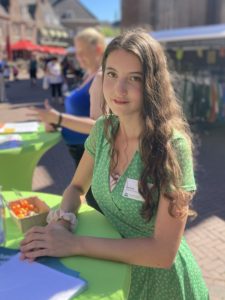
Eyeopener
Behavioural scientist Ana Coiciu explored how average Wageningen citizens feel about an app that provides personal dietary advice based on your location and the moment that best suits your personal metabolism. The interactions with the market shoppers provide her with valuable insights for her PhD research, she says. ‘Here you can hear what people really think. It is different from the research panel setting.’
Jasper Scholl, a PhD student of Consumption & Healthy Lifestyle, had a similar experience. Armed with a plate of stroopwafels and earphones for an audio test, he tested how willing elderly citizens were to use a mindfulness app to change their eating habits (chew more conscientiously) to improve their cognitive health. In part due to the stroopwafels, he got plenty of attention. ‘This is a perfect opportunity for me to base my findings on more than just literature. In these few hours at the market, I have spoken to more elderly people than in the six months I have been working on my PhD so far.’
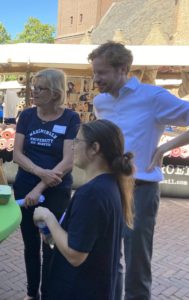
Bridging the gap
And what about the Wageningen inhabitants? ‘It’s really great that the university has taken this initiative!’ one couple said. A citizen of Renkum, whose son studies at WUR (‘so I know what WUR is about’) says: ‘I would welcome this more often’. An elderly lady says: ‘I was unsure what to ask the scientist, but once we got talking, it was enjoyable.’
WUR president Sjoukje Heimovaara and Mayor Floor Vermeulen, who strolled past the tables together and were never short of attention from the market visitors, were enthusiastic. ‘Although the campus is just around the corner, it sometimes feels much further away. We have been wanting to bridge the gap between the city and the campus for a while now, and I think we have been successful today. There are other opportunities also, for example, to collaborate on issues on the city agenda’, according to Vermeulen.
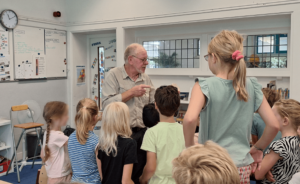
On the market and in the classroom
In addition to ‘Scientists on the market’, there was also a ‘Scientists in the classroom’ event on Wednesday. Here, WUR takes science to students in primary and secondary schools. WUR students were present at Pantarijn, where they conducted a sensory study on the scholars: tasting while blindfolded and a smell test. The guest classes in primary schools were facilitated by researchers and teachers. Microbiologist Gosse Schraa, for example, introduced group five of the Brinkschool to the world of micro-organisms a week after he visited with Petri dishes to cultivate fungi. And successfully so: ‘Mine is so large it is almost crawling out of the dish’, boasts one of the students.

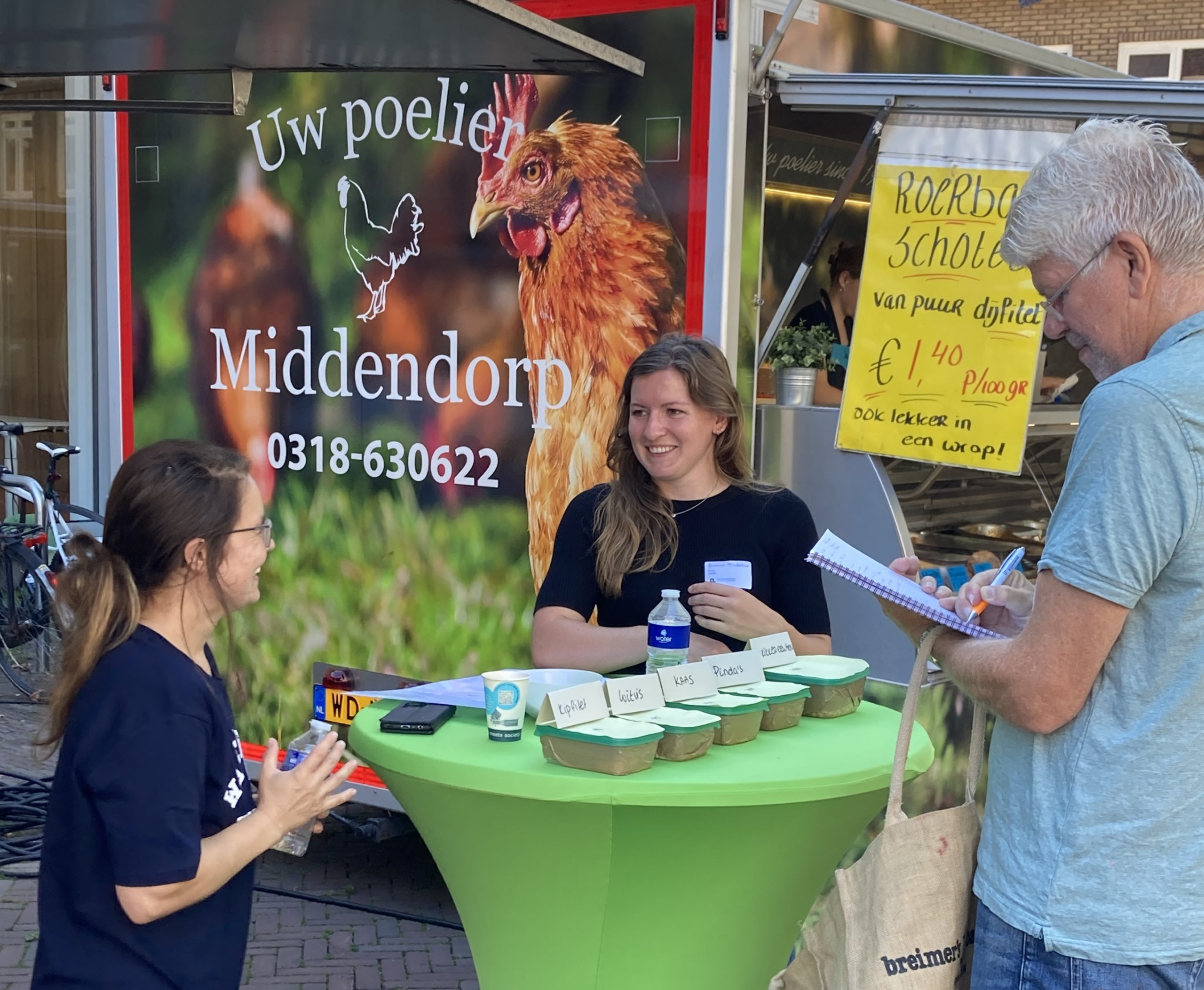 Explaining proteins on the market. Somja de Vries on the left, Roseanne Minderhoud centre. Photos Resource
Explaining proteins on the market. Somja de Vries on the left, Roseanne Minderhoud centre. Photos Resource 